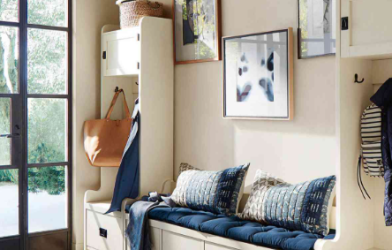Subtotal $0.00
As winter fades and early signs of spring emerge, now is the perfect time to consider adding vertical structure to your garden. Whether it’s the bare branches of trees or emerging bulbs, a little extra height can bring life to an otherwise dull winter garden. Trellises, tuteurs, and obelisks can provide that much-needed structure, offering beauty and support all year round.
Let’s start by defining the three structures:
- Obelisk: A vertical structure, typically rectangular, designed to support climbing plants. These structures often have a pyramid-shaped top.
- Tuteur: A four-sided support that tapers from a broad base to a point at the top. It’s also used to support climbing plants and can have a pyramid-like shape.
- Trellis: A lattice frame used to support climbing plants, often two-dimensional and ideal for creating a natural screen or vertical garden space.
I’ve seen countless gardens across the country, each with its unique charm, and many feature some form of vertical support. Some are simple, while others are incredibly creative. Whether they’re functional or decorative, these structures make a lasting impact on your garden’s design.
Vertical Appeal in Every Season
In my own garden, I rely on a variety of obelisks and tuteurs to add height and structure, particularly during the winter months when the garden looks bare. One of my favorites is a seven-foot iron obelisk that was once in my mother’s garden. This piece now stands tall under a canopy of oak trees, providing visual interest throughout the year. Even when the clematis I’ve planted on it is dormant, the obelisk remains a focal point in the garden, adding year-round appeal.
In another area of my garden, a smaller, five-foot obelisk supports a tall helenium. During the winter, it doubles as a perch for birds, further adding life and functionality to the space.
Creating Height in Small Spaces
For smaller gardens, or tight spaces like a narrow side yard or carport, it can be difficult to create the sense of height you need. A decorative structure like a trellis or obelisk is a perfect solution. In one such space in my garden, I’ve added an obelisk that complements the existing plants, such as rudbeckia triloba, and creates the vertical presence this space desperately needed.
A few years ago, I came across a charming wooden obelisk in a raised bed garden. Even without plants climbing up it, the structure still provided visual interest, showing just how effective vertical elements can be, even in winter. I’ve used similar structures when designing raised vegetable beds for clients, adding an extra layer of beauty and purpose during the off-season.
Creative and Affordable Support
Not all garden supports need to be expensive or formal. One of my favorite examples is a trellis created from repurposed materials, such as gates, ladders, or even an old baby crib. A creative support like this can bring a playful touch to your garden, especially for vines like beans or cucumbers. This approach adds personality and charm, and it’s often a more affordable way to bring vertical interest into the space.
For those who want to take it a step further, creating living structures out of materials like willow branches can elevate the look of your garden. A living willow arbor, for example, is a project that anyone can tackle. By bending long willow branches into a desired shape and securing them with twine, you can create a stunning, natural structure that will grow over time. It’s a fun and artistic way to add height and interest to your garden.
Upcycled Materials for Unique Structures
Sometimes, the best garden supports are made from repurposed materials. I’ve seen a trellis made from fallen tree branches that adds a rustic charm to a garden space. Whether it’s a simple design or something more elaborate, using natural materials like these gives your garden a personal touch.
In my own garden, I’ve taken inspiration from my mother, who repurposed old fireplace tools as garden stakes. These sturdy and durable stakes not only support tall plants but also add a distinctive element to the garden, even when they aren’t being used for support.
The Function of Simple Stakes
While larger structures are fantastic, don’t underestimate the power of simpler garden supports. Triangular tuteurs and other basic plant stakes can be just as effective in keeping plants upright. I’ve used these in my pollinator garden, where they provide structure to plants like Henry Eilers rudbeckia. Even without plants climbing them, they offer visual interest and add an element of design to the garden.
Conclusion
Trellises, tuteurs, and obelisks are essential garden structures that add height, texture, and beauty to your outdoor space, regardless of the season. Whether used to support climbing plants, create focal points, or simply add vertical interest, these structures are a must-have for any garden. And with so many creative ways to incorporate them, you can easily transform your garden into a stunning landscape that thrives all year long.












